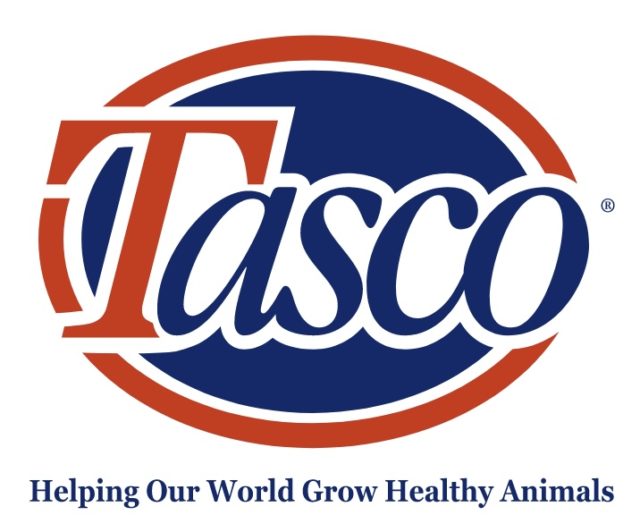Every March, the madness begins. Avid college basketball fans will recognize the reference as more than 130 men’s and women’s Division 1 college basketball teams vie for the championship trophies, knowing full well that for all but two teams, their final game of the season will be a loss.
Similar madness occurs about twice each year when mycotoxins occupy center stage in our forage management programs. A red flag goes up, and we are on high alert when our nutritionist says, “The corn silage has mycotoxins.” Our thoughts turn to the presence, prevalence and quantity of mycotoxins – and more alarming, their potential negative impacts on animal health and performance. More than 400 mycotoxins are produced from approximately 150 different molds, but generally only a dozen or so are problematic for ruminants, as certain mycotoxins can be degraded in the rumen to non-toxic metabolites.
Risk factors for molds and mycotoxins are present throughout the growing and harvesting stages of corn production and include moist weather at silk emergence, drought or high temperatures during grain maturation, insect or other damage to ears and stalks, other stress to plants, delayed maturation or delayed harvest, contaminated storage structures, failure to adequately dry grain or poor ventilation of dried grain storage, and failure to exclude air from high-moisture anaerobic storage. During fall harvest of corn for silage and shortly thereafter, field-associated or pre-harvest molds like fusarium and aspergillus can flourish. Fusarium molds can produce deoxynivalenol (DON), HT-2, T-2, fumonisin (B1, B2, B3) and zearalenone, while aspergillus molds are capable of producing a variety of aflatoxins (B1, B2, G1, G2) and patulin.
Likewise, after a winter of fermentation, storage and about the time of year when the weather warms, usually around March when college basketball madness is rampant, we can add Penicillium to the list of prominent molds leading to potential mycotoxin contamination of forages. Penicillium are primarily post-harvest molds that can produce ochratoxin A, citrinin, roquefortine and mycophenolic acid, as well as some other mycotoxins.
Mitigation strategies – ‘Binders’
Limited mitigation strategies are available when mycotoxins are detected at levels that may cause adverse health events and depress production. As “dilution is the solution to pollution,” one strategy is to dilute the quantity of silage contaminated with mycotoxins to a level that is below the harmful threshold in the TMR. Often, this is virtually impossible to accomplish given the fixed nature of stored forages on most dairies as well as the sporadic distribution of molds and possible mycotoxins within stored silages. These tend to be concentrated to specific areas that make it difficult to dilute evenly.
The most easily accomplished mitigation strategy is the inclusion of mycotoxin “binders” in the diet. (We have chosen to place “binders” in quotes, as there is no such thing as a mycotoxin “binder,” by definition, in feed nomenclature in the U.S.) Mycotoxin “binders” can take the form of silicates (e.g., sodium silico aluminate) used as flow agents, clays (e.g., attapulgite, bentonite, montmorillonite) used as non-specific binders or pelleting aids, and yeast cell wall derivatives (e.g., hydrolyzed yeast with MOS and beta-glucans) used for specific nutrient content or as a prebiotic to feed beneficial bacteria.
Although a variety of mycotoxin “binders” are available, it is important to note that none of them are 100% effective for binding the most common mycotoxins. This often leads to a period of marginal effectiveness after they have been fed for 30 to 60 days, at which point the feeding rate is increased to 1.5 to two times the original feeding rate. Unfortunately, that isn’t an economically sustainable practice nor is it a nutritionally sustainable practice since at these rates other nutrients, like expensive trace minerals, may be bound as well. This leads many dairy producers, nutritionists and veterinarians to ask, “What alternative mitigation strategies are at our disposal besides ‘binders’?”
Mitigation strategies – Beyond ‘binders’
As we consider other options, we can think about being proactive (reducing the risk of mycotoxins) and reactive (how are we dealing with the problem today). Recent research has pointed to two additional potential mycotoxin mitigation strategies: use of a science-based, research-proven silage inoculant and daily feeding of an effective probiotic.
A study published in Animal Feed Science and Technology in 2018 demonstrated the benefits of combining Lactobacillus buchneri LB1819 and Lactococcus lactis O224 on fermentation and mycotoxin production in corn silage at two different densities. After 32 days of ensiling, the control and inoculated silage had similar chemical parameters, yeast and mold counts. The inoculated forage had significantly lower concentrations of fumonisin B2 and roquefortine C. Therefore, that study clearly demonstrated a beneficial effect of a specific silage inoculant on certain mycotoxins.
Ruminants, due to the nature and diversity of micro-organisms in the rumen, are better adapted to deal with mycotoxins than monogastric species. As stated previously, no mycotoxin “binder” is 100% effective, so now it’s time to focus on the cow. What can we do to more effectively prepare her to combat the deleterious effects of mycotoxins that escape binding? One answer is daily feeding of an effective probiotic that can help improve lower gastrointestinal tract integrity. The evidence is derived from an in-vitro assay.
Trans-epithelial electrical resistance (TEER) assays have been used to quantify the integrity of intestinal epithelial cells on the lab bench. By plating intestinal cells and then challenging them with pathogens in the presence or absence of probiotics, it has been demonstrated successfully, numerous times, the ability of effective probiotics to enhance the barrier function and integrity of the intestine when challenged with specific pathogens. This time, instead of a pathogen, the system was challenged with deoxynivalenol (DON) in the presence or absence of effective probiotics. Lactobacillus animalis LA51 and a bacillus sp. CH200 were effective at enhancing the integrity of the cells and their junction proteins in the presence of DON, thus leading to the conclusion that these probiotic strains may reduce intestinal damage caused by DON, although in-vivo research may be warranted.
There will always be concern and worry about the presence, prevalence and quantity of mycotoxins present in harvested, stored and fed forages. Although the most basic mitigation strategy currently favors feeding “binders,” alternative strategies are available that include science-based, research-proven silage inoculants and effective probiotics. In the fall, and especially during March “mycotoxin madness,” don’t let your last game of the season be a loss by relying solely on one mitigation strategy for control of mycotoxins.









